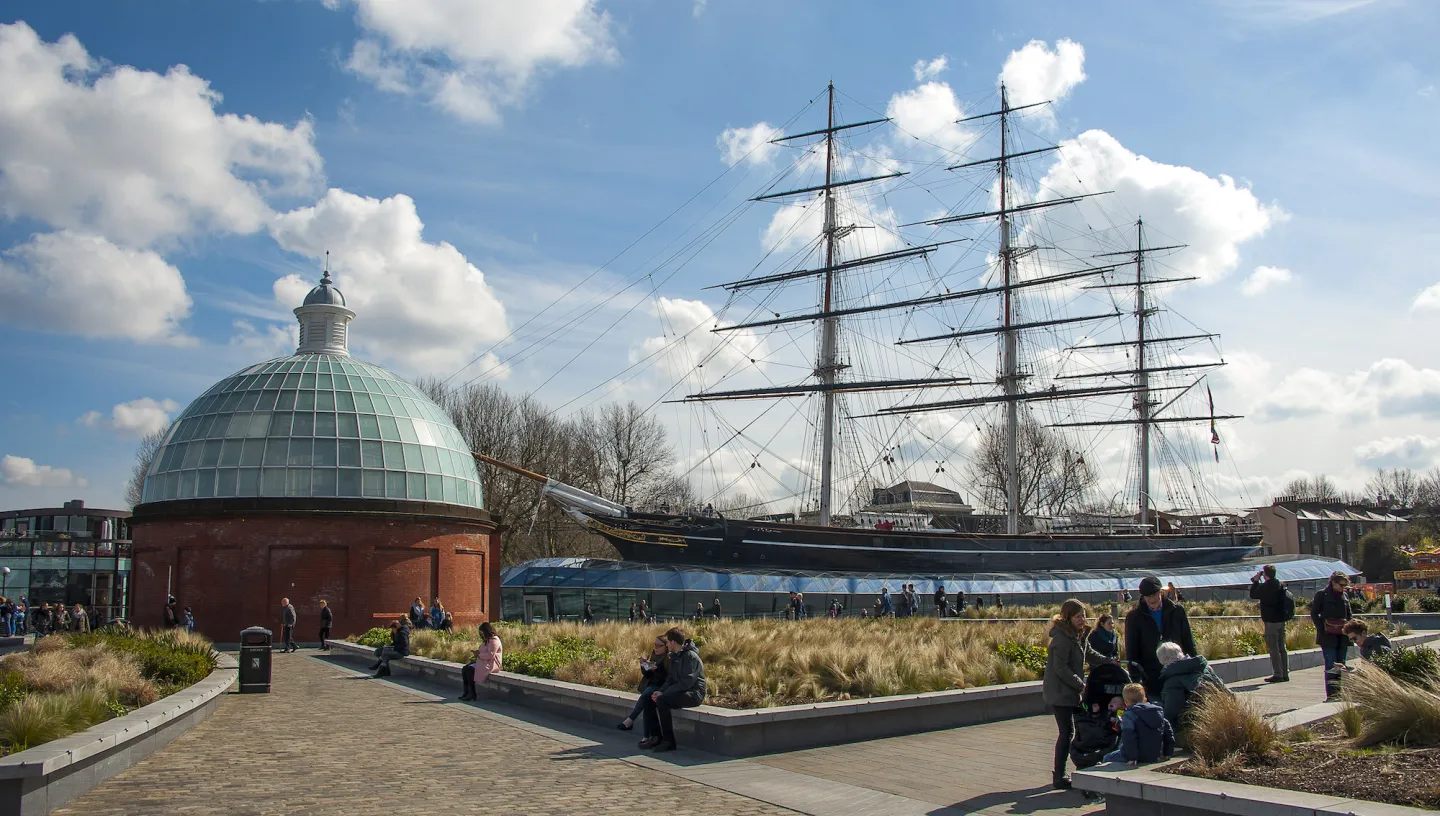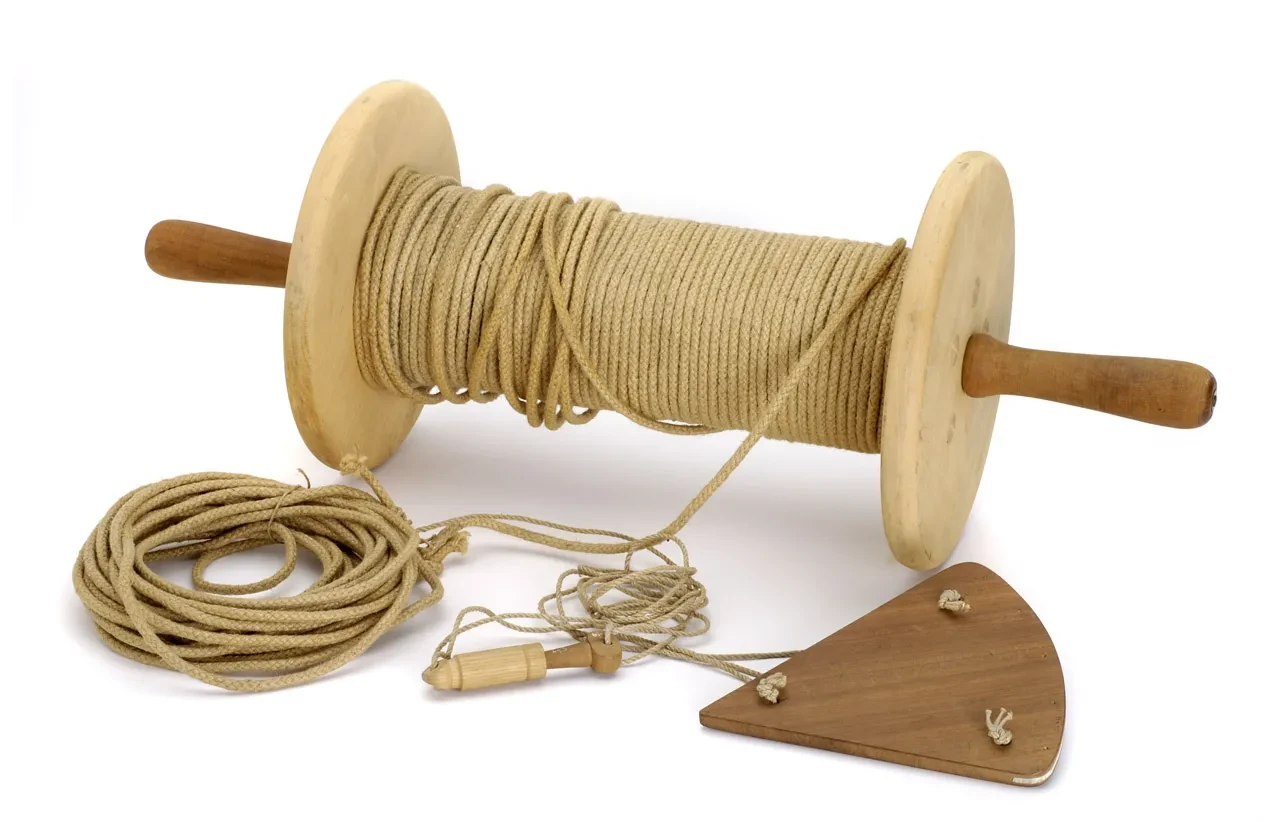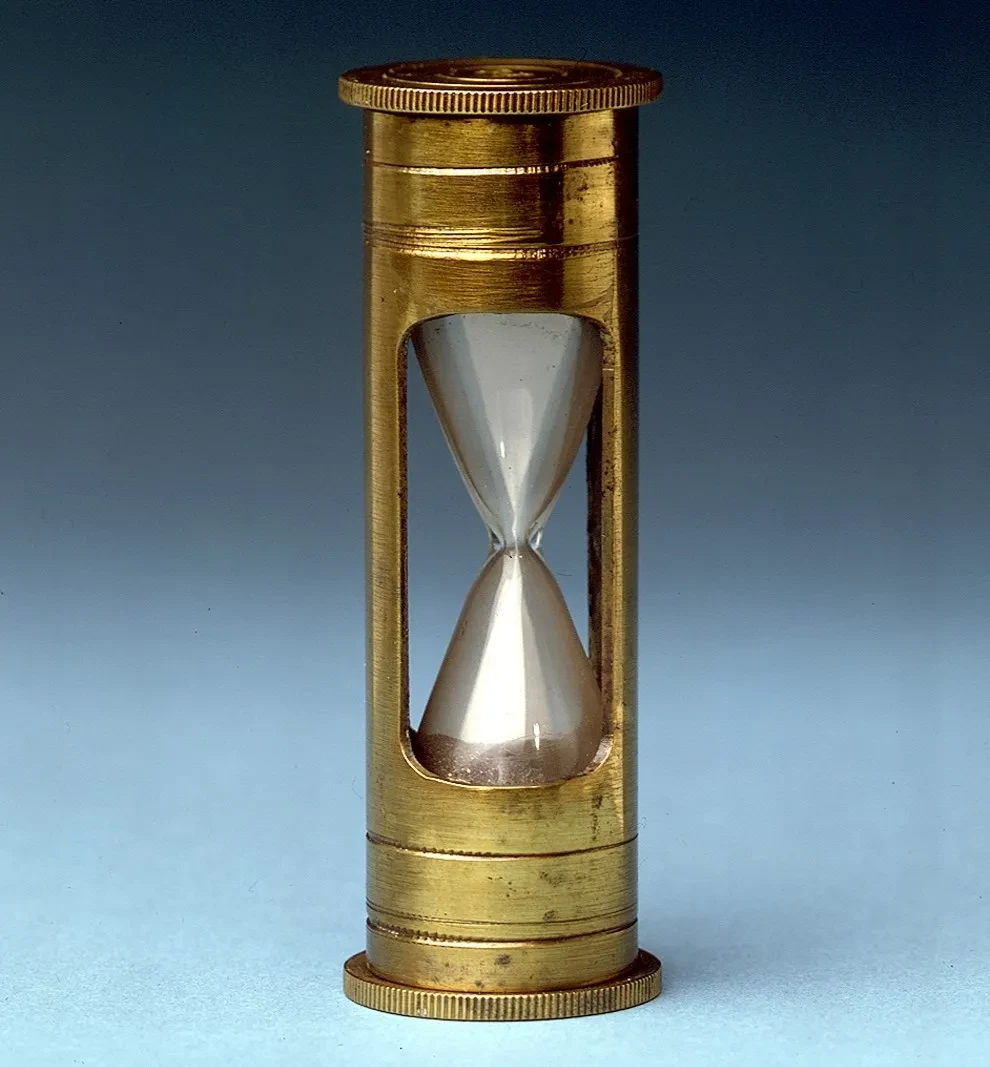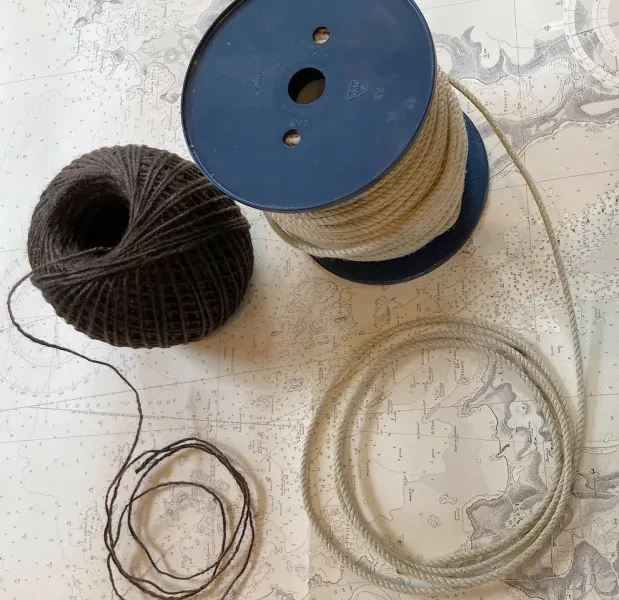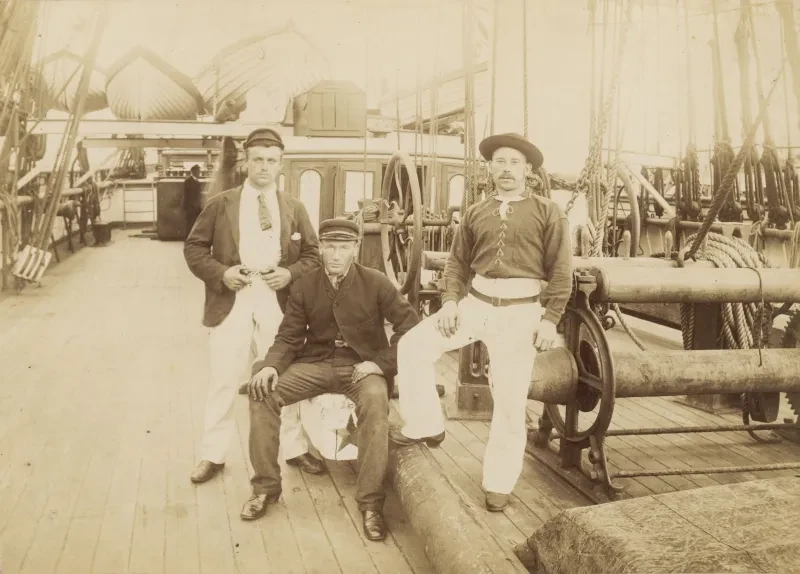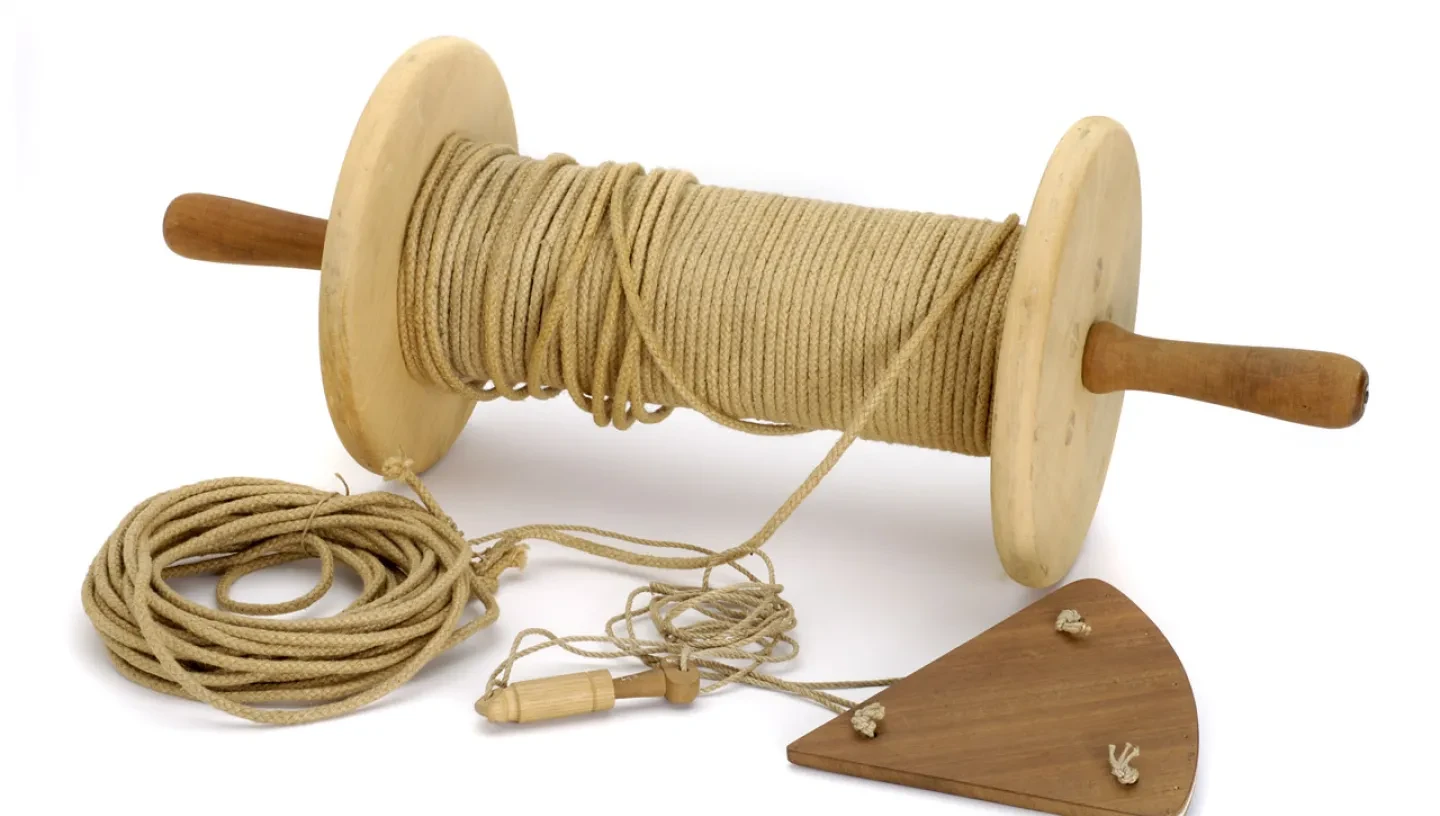
Most people will have heard the term ‘knots’, the unit in which a ship’s speed is measured. It is an almost universal term, with identical or similar sounding words in many languages, such as knoten (German), nudo (Spanish) and notto (Japanese).
But where did all these knots come from? Not many people are aware of the origin of the term and probably fewer still know what a knot actually equates to. A knot is a unit of speed, equal to exactly one nautical mile (nm) per hour.
The top recorded speed of Cutty Sark, for instance, was more than 17 knots (17 nm/hour), a speed many power-driven merchant ships today cannot achieve (although remember, Cutty Sark needed a favourable and constant breeze to sail at that speed, such as the Trade winds).
What is a nautical mile?
A nautical mile – unlike, say, a statute mile in Britain – is based on a geographical unit of distance. Ninety degrees of latitude separate the Equator from the North Pole; similarly, there are 90° of latitude between the Equator and the South Pole. Each degree of latitude is subdivided into 60 minutes (60’), making 5,400 minutes of arc between the Equator and each pole (90° x 60’).
This fact is used to calculate the length of a nautical mile, which is equivalent to one minute of latitude, so the distance from the Equator to the North or South Pole is the same figure, 5,400 nm.
1’ latitude = 1 nautical mile
North Pole to South Pole distance = 10,800 nm (2 x 5,400 nm)
This is a universal measurement, used by navigators the world over, at sea and in aviation. You might occasionally hear an airline captain mention nautical miles when welcoming passengers on board a flight over the PA system.
Where did the word knot originate as a measure of speed?
In navigation it is vital to know the distance your ship has travelled. To determine distance, early navigators recorded the ship’s speed regularly, once every half an hour or more. To do this, they dropped a measuring device known as a log into the sea from the stern of the ship.
All ships, including Cutty Sark, used a similar method until more advanced mechanical instruments were introduced in the twentieth century.
The log is made up of a wooden, weighted, triangular drag device that stays stationary in the sea, known as the ‘ship’ or ‘chip’, and a line on a spool that is unwound as the ship sails away from the chip. The officer of the watch, with sandglass in hand, times the log as the line runs out and shouts ‘Belay!’ at a specified interval (it might be 30 seconds).
‘Hand the log!’ is then shouted and the sailors start hauling the log in. The line is divided by evenly spaced knots which act as markers. On hearing the order, the seaman watching at the stern checks how many knots in the rope have passed into the sea in the given time, thereby providing a reading of the ship’s speed in knots.
Measuring knots from the log and line
If the speed measured by logline is 9 knots and the wind has stayed constant in strength and direction for the half hour since the log was last streamed to measure the speed, then, as 1 knot is equal to 1 nm/hour, the distance travelled in that time is 4.5 nm.
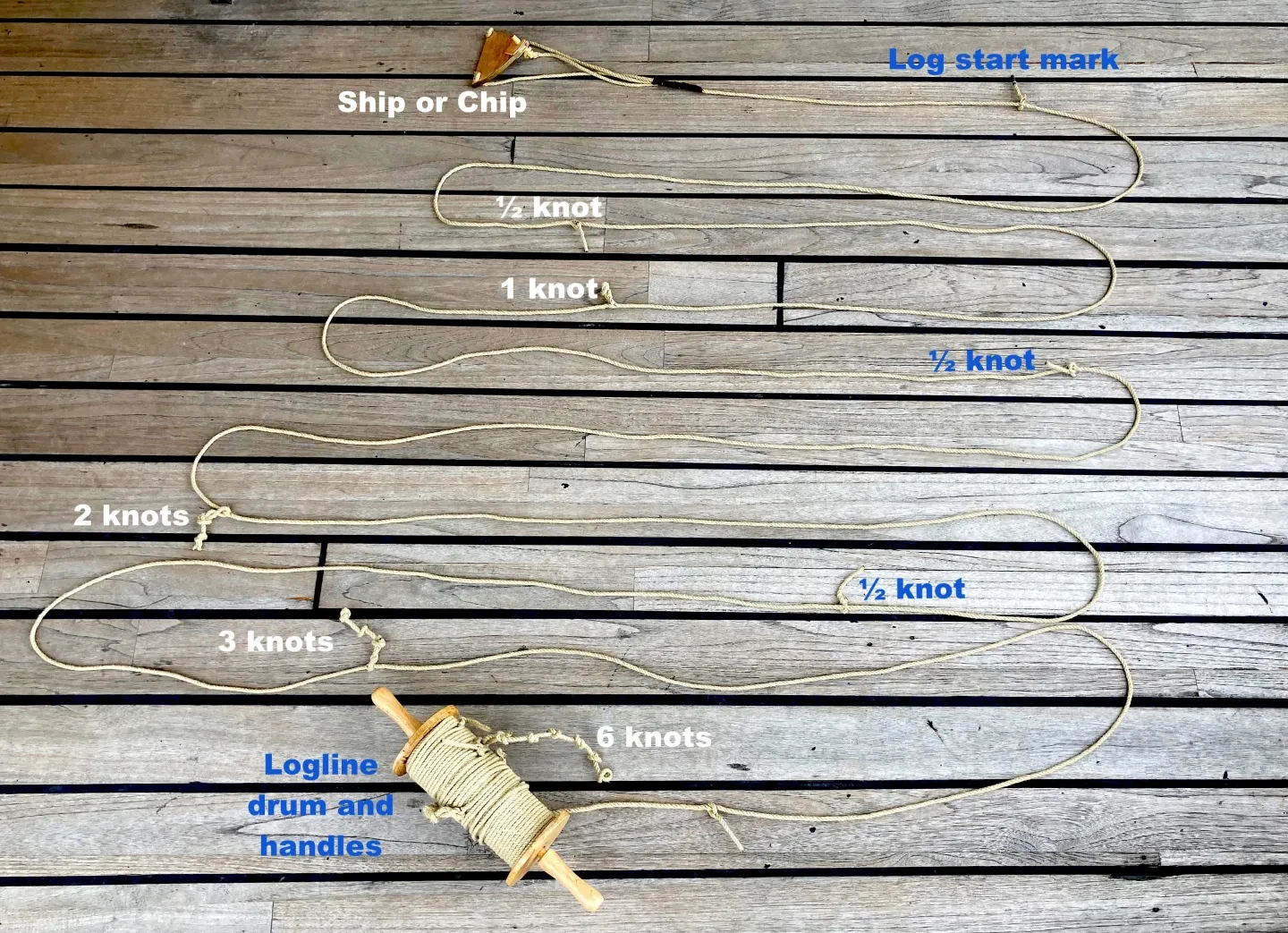
The design and calibration of the logline with its knots and the following calculation of a ship’s speed is based on the equation:
Speed = Distance ÷ Time
Speed is equal to distance divided by time. If you know the distance travelled (by measuring the amount of logline that has been dropped into the sea) and the time elapsed (from the officer of the watch’s sandglass), the calculation is relatively easy!
